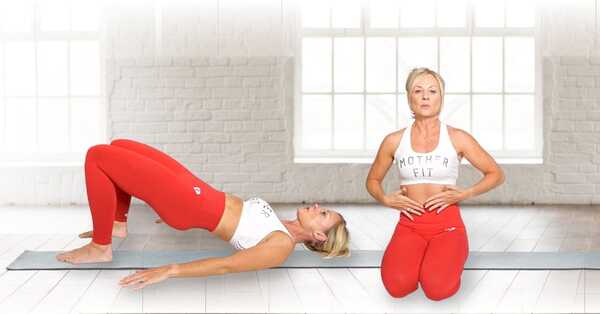
Michelle Baynham
23 Nov 2021
The 2 sides of the abdominal wall are connected in the middle on a line called the linea alba. We have 3 layers of abdominals: External obliques, internal obliques, and transverse abdominis.
Divarication of the recti or more commonly known as diastasis recti, is the thinning of the linea alba, the separation of the rectus abdominis muscle (6-pack muscles) that occurs during pregnancy, which is completely normal and only becomes a problem if the muscles do not return to their correct alignment 4-8 weeks post-childbirth. It can lead to chronic lower back pain due to poor spine protection from the core, urinary incontinence, constipation, pain during sex, and pelvic or hip pain.
How To Know If I Have Diastasis Recti?
It is measured by checking the width and depth between the two rectus muscle bellies when barely lifting the head. Technically, anything over 2.5 finger widths. It should feel like a trampoline, the finger shouldn’t sink in. As well as feeling the divarication, also look for any bulging, doming, or coning of the rectus (linea alba). If you have any of these symptoms it may be that you are not generating the right pressure to protect the spine. You should see a physiotherapist/women’s health specialist to verify.
How To Heal Diastasis Recti
In conjunction with a recovery plan put in place by either your physiotherapist or women’s physician, a daily exercise and deep breathing routine should be performed. Exercises that recruit the pelvic floor, good quality breathing and core muscles to help give both the pelvis and spine more stability.
- Fix breathing, which improves the natural function of the pelvic floor and core.
- Contract the pelvic floor on the exhale and learn to release on the inhale of breath.
- Work on posture and zone of alignment – These can do wonders for your recovery.
5 Facts About Diastasis Recti
1. Almost 100% of pregnant women develop DR by trimester 3, and nearly all women have a diastastis of at least 16mm by weeks 35-39 of pregnancy.
2. DR has been historically defined by “the gap” or the distance between the two sides of the rectus abdominis. However, recent research shows closing the gap is not as important as regaining tension in the lib alba (the connective tissue that’s in between)
3. DR research is still limited compared to other concerns, but research is growing, and the quality is improving.
4. As research and evidence progress, there are fewer limitations on the types of exercise women with DR can do – meaning on average, women can do MORE than previously thought without worsening symptoms. Yay!
5. Every woman’s postpartum healing is different. Some women’s DR will “heal” with no intervention (assuming no additional stress or aggravation of the DR exists). More than half still have a wide separation 8 weeks post-delivery, and although some “recover” by 6 months, many haven’t “recovered” at 1 year.
Exercises To Help Heal Diastasis Recti
EXERCISE 1 – Pelvic Tilt
Performing pelvic tilts will help you become aware of your posture and help strengthen your pelvic floor, abdominal muscles, and stretch the muscles in your lower back. Focus on fixing your pelvic floor and then move on to your abdominals.
Reps: 10 - Sets: 3
EXERCISE 2 – Pelvic Tilt With Leg Lift
To advance the previous exercise, a leg lift is added to really get abdominal muscles firing! You should notice this as you bring the leg down. Again, this helps tremendously with overall recovery, posture and breathing.
Reps: 10 - Sets: 3
EXERCISE 3 – Side Plank Thigh Ball Squeeze
The side plank with ball squeeze allows multiple muscle groups to be trained at once and should not be performed unless you’ve mastered the basic of pelvic floor and core engagement.
Reps: 10 - Sets: 3
EXERCISE 4 – Reverse Leg Slides
I love this exercise because it really makes me focus on my mind to muscle connection. Keeping good and even balance, pelvis neutral and adding movement can be challenging.
Reps: 10 - Sets: 3
Diastasis Recti: Exercises to Avoid
- Sit-ups
- Crunches
- Burpees
These exercises should be completely avoided due to the stress that is placed on the midline of the abdominals. By continuously performing sit-ups or any of these exercises over a long duration can worsen diastasis recti separation. They also focus on intraabdominal pressure which is a big no-no for mums with any form of diastasis recti.
As a safe alternative, implement some gentle yoga poses such as cat-cow to help improve blood flow without placing too much stress on your lower back and midline.
The Rebuild Your Core Program
The Mother Fit Rebuild Your Core Program guides you through 6 steps to pelvic floor rehab and then you can follows the Mother Fit 9 week Postpartum day by day program. The program is mindful of how a new mum must be feeling in mind body and soul. Take your time mama’s and enjoy your baby.

Michelle Baynham
Share this article

